Unlike other cheap tire brands, Federal tires are made in Taiwan. The company was established in 1954. Technical partnerships with Bridgestone in 1960 to 1979 and with Sumitomo Rubber Industries in 1981 to 2000 gave Federal tires the necessary capabilities to manufacture their own breed of tires for cars, trucks, crossovers, SUVs, and commercial vehicles worldwide.
It was during my trip to South East Asia in 2007 that I got the chance to test drive a modified 2002 Honda S2000 fitted with Federal race performance tires. This was my first time to hear about the Federal brand, having previously thought that this is just another generic tire maker from China.
In my humble opinion, the marketing team of Federal tires deserves an accolade. As a way to promote the tires and bring customers closer to the brand, Federal tires ventured into motorsports events, particularly in drifting and various track events. This not only gave the brand a young, fresh, and sporty image, but it was an easy way to get direct feedback from the drivers so they can further refine the design and on-road performance of their products.
No other cheap tire brand can boast of a racing pedigree. Such is the reason why I had high expectations when crafting this Federal tires review.
Federal tires are competing not only for your heart and mind but also for your wallet. These tires are cheaper than the more popular brands, and they have a similar price to Chinese-made tires.
Federal tires are a mainstream in the motorsports industry. In fact, Federal is the only cheap tire brand that sells tires designed for racing. If you enjoy track days or if you frequently visit the drag strip or the drift course, you should check out Federal’s line of impressive racing tires.
I am fully aware that the design of the tire should be the least of your concerns, but it is hard to deny Federal tires when it comes to the tread design. Conservative and discreet are not the right words to describe Federal tires. These tires have a sporting nature and feature aggressive tread patterns with equally stylish sidewalls, particularly the high-performance and ultra-high performance tires.
Conservative and discreet are not the right words to describe Federal tires. These tires have a sporting nature and feature aggressive tread patterns with equally stylish sidewalls, particularly the high-performance and ultra-high performance tires.
Federal All-Season Passenger Tires
Federal Formoza GIOat TireRack.com at PriorityTire.com at Amazon.com
The Federal Formoza GIO is the entry-level all-season tire designed for subcompacts, compacts, small sedans, and crossovers.
This tire is geared more to provide better handling courtesy of the advanced tire compound and outstanding fuel economy due to the low rolling resistance.
The Federal Formoza GIO is equipped with enclosed tread and tire blocks to reduce road noise and to give you a more comfortable ride. It also features a honeycomb design on the sidewall that is reputed to reduce the build-up of heat on the tire as you drive. It also has blade-shaped tread grooves to effectively channel out water from the treads for better performance on wet and slippery roads.
It also has blade-shaped tread grooves to effectively channel out water from the treads for better performance on wet and slippery roads.
The unique thing about this tire is that it has a M+S rating. This means it is also capable of providing acceptable levels of traction and grip on mud and snow-covered roads.
I got the chance to test drive a 2014 Mazda 3 sedan equipped with stock 16-inch wheels and Federal Formoza GIO all-season rubber. I wasn’t expecting much in terms of overall performance but I was impressed with the dry traction and comfort of the Federal Formoza GIO. Road noise is a mixed bag; it was quiet in the city, but highway driving will reveal a bit more noise at speed. Traction in the wet is acceptable, but if you want a tire that performs better in slippery conditions then this is not the tire for you.
Treadwear was also a bit of an issue. The owner of the Mazda 3 bought the tires 5 months ago and has traveled 2,500 miles. The tires were already showing signs of wear.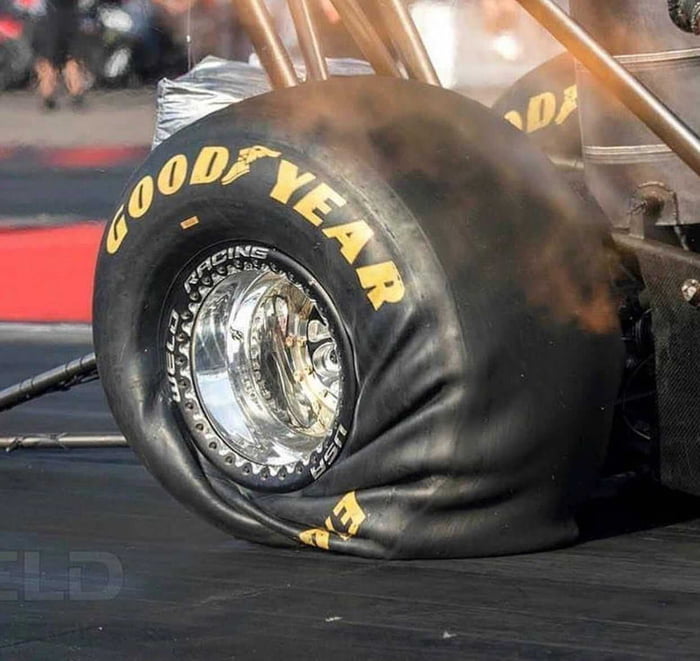
The Federal Formoza GIO is a good tire for the price. Just don’t expect much in terms of intense sporty handling, wet performance, and longevity.
Federal SS657at TireRack.com at PriorityTire.com at Amazon.com
Higher up the food chain is the Federal SS657. This is an all-season radial tire designed for subcompacts and small sedans. With a tread pattern designed to decrease noise levels at speed, the Federal SS657 is also equipped with larger grooves to deliver better driving performance on wet roads.
I had a brief test drive inside a 2012 Volkswagen Jetta equipped with Federal SS657 tires on 16-inch OEM wheels. The tires were indeed a bit more hushed on the highway compared to the Formoza GIO. The tires were also silent in city driving and were a bit more comfortable and reassuring when faced with road irregularities and deep potholes.
I can honestly say that the Federal SS657 is more refined than the Formoza GIO, and it also performed better in the wet.

It remained quiet, comfortable, and stable when I was driving in the rain, and I did not sense a loss of traction or grip even when the tires were sloshing on the roads at higher speeds.
Traction and grip on dry roads were good, which is not surprising since the tires were effective on wet roads. This tire is also M+S rated so it seems it can perform well on muddy and snowy roads as well. The Federal SS657 is a bit more costly compared to the Formoza GIO but not by much. If you demand more from an entry-level all-season tire then the Federal SS657 is a sterling choice.
Federal High-Performance Tires
Federal Formoza AZ01at TireRack.com at PriorityTire.com at Amazon.com
The Federal Formoza AZ01 is a high-performance tire with an asymmetric tread design. It aims to deliver the best possible combination of comfort, fuel economy, and performance at a friendly price. This tire is has a wider outer profile design to increase the contact patch to improve handling and cornering.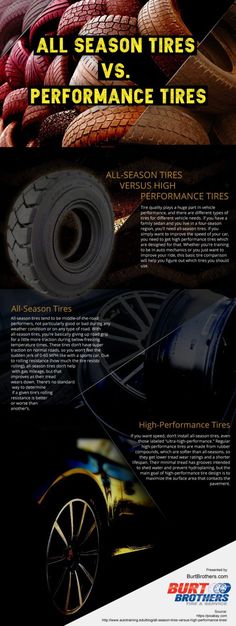 The inside profile is equipped with curved groove walls to increase stability when traveling on wet roads at higher speeds.
The inside profile is equipped with curved groove walls to increase stability when traveling on wet roads at higher speeds.
The Federal Formoza AZ01 is also engineered with a brand new noise reduction design courtesy of five differently formed tread blocks to significantly reduce road noise at highway speeds.
I got the chance to test these tires on a 2013 Subaru Impreza WRX sedan fitted with stock 17-inch wheels and Federal Formoza AZ01 tires. The owner of the Subaru used to do a lot of track days until deciding to buy a souped-up BMW M3. The Bimmer is now his track car, and the Subaru is now delegated to pure street driving.
The Federal Formoza AZ01 tires were silent and quite comfy on the highway, but it was a different story in city driving.
The Subaru is partly to blame since it is equipped with stiffer coil springs for a slightly lowered look. Traction and grip on dry roads were good and the tires also performed well on wet roads. This has something to do with the advanced silica rubber compound and the wider outer shoulder design of the tires.
Treadwear was also remarkable given the fact that these tires were installed more than 6 months ago and have accumulated 4,500 miles. I handed back the keys to the Subaru with a lasting good impression of the Federal Formoza AZ01 tires. The owner was planning to upgrade to a more aggressive set of Federal tires since he was also impressed with the wet/dry performance and comfort of the AZ01.
Federal Formoza FD2at TireRack.com at PriorityTire.com at Amazon.com
You only need to take one look at the Federal Formoza FD2 to conclude that this is a tire designed for high-performance driving.
It is equipped with a wider solid central rib for better stability and to further enhance the on-center feel of your ride. This tire is engineered with a 3-in-1 innovative groove design that not only makes the tires look spectacularly good, but this feature is designed to reduce road noise, enhance riding comfort, and deliver better traction and grip on both wet and dry pavement.
My test car is a 2013 Ford Focus ST hatchback fitted with aftermarket 18-inch wheels and Federal Formoza FD2 tires.
It would be impossible to judge the overall riding comfort of the tires since the Focus is fitted with stiffer coilover street suspension, but the ride silence was evident barring the droning sound of the sporty exhaust set-up.
Traction and grip on dry roads were outstanding, and performance in the wet is not mediocre either.
The Federal Formoza FD2 is created using an advanced silica rubber compound so it’s no surprise that the tires never lost grip in the wet, even as I locked the steering wheel while catching the apex in a particularly fast and winding corner.
The owner of the Focus ST only had one complaint about the Federal Formoza FD2.
Not surprisingly, he had issues with the tread wear of the tires, although he is the type of driver to drive a bit more aggressively than the norm. But considering the low price, the Federal Formoza FD2 is a solid choice for sporty cars.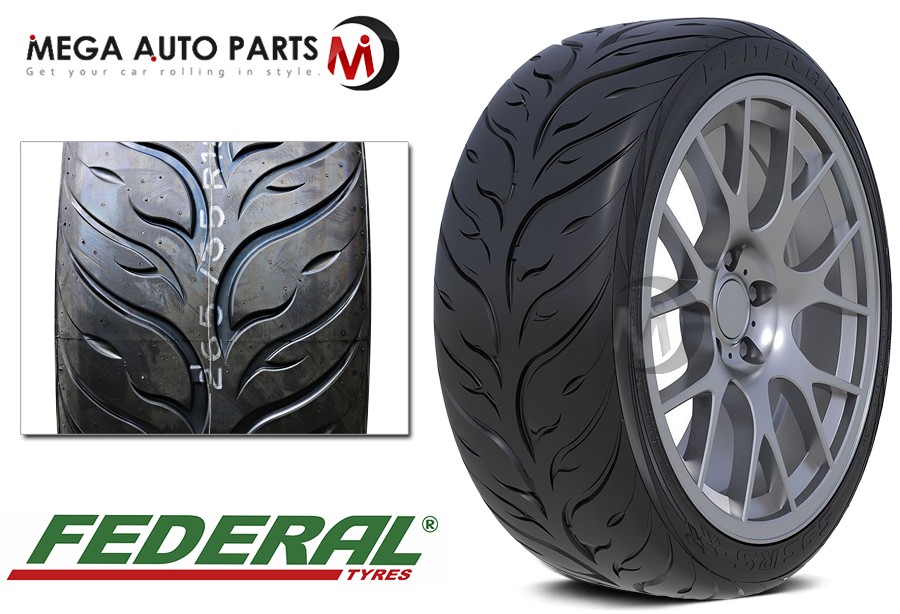
Federal Ultra-High Performance Tires
Federal 595 RPMat TireRack.com at PriorityTire.com at Amazon.com
The Federal 595 RPM is designed for sports sedans and sports cars. This is an ultra-high performance tire with the looks of a supermodel.
What makes this tire unique is the soft inner tread and the stiff outer tread that delivers the perfect balance of handling and comfort.
The soft inner tread is equipped with main grooves to reduce road noise while improving grip and traction in the wet. The stiff outer tread is engineered to enhance grip when cornering while significantly reducing unwanted road noise at high speed.
I was supposed to test a 2009 BMW M3 fitted with Federal 595 RPM tires, but the owner canceled at the last minute to fix an engine overheating issue. I asked him about the performance of the tires, and he sounded visibly pleased. He had no complaints when it comes to wet and dry traction, but he was more concerned about the tread wear.
I tried hard to source an alternative test drive but to no avail. The tire dealer told me that the Federal 595 RPM is popular because it costs less than comparable tires from Continental and Michelin while having a more aggressive tread design.
Federal 595at TireRack.com at PriorityTire.com at Amazon.com
Don’t be confused about the Federal 595. This was formerly named the SS595 and is one of the most popular tires in Federal’s lineup.
This is also the same tire that was fitted to the 2002 Honda S2000 that I drove in SE Asia. It is easy to distinguish this tire courtesy of the aggressive V-shaped tread. This tire was constructed using an innovative silica compound to deliver excellent traction and handling on both wet and dry pavement.
The V-shaped tread design is also engineered to maximize the contact patch of the tires for better handling, cornering, and high-speed stability.
The Honda S2000 that I drove was aggressively modified for show purposes. I don’t want to comment on the ride comfort since the car was fitted with racing coilovers, but the ride silence on both city and highway driving was acceptable given the extreme nature of the S2000.
I don’t want to comment on the ride comfort since the car was fitted with racing coilovers, but the ride silence on both city and highway driving was acceptable given the extreme nature of the S2000.
Traction and grip on both wet and dry surfaces were superb. The only complaint was the rapid tread wear, but the owner of the S2000 said this was not a major issue given the low price of the Federal 595.
Federal Truck/SUV Tires
Federal Couragia XUVat TireRack.com at PriorityTire.com at Amazon.com
The Federal Couragia XUV is an all-season touring tire designed for modern pickup trucks, SUVs, and crossovers.
It has four vertical tread grooves and a slanted long groove center rib to quickly evacuate water from the treads for exceptional performance on wet roads. The center rib is equipped with lateral patterns to enhance straight-line stability and performance at higher speeds.
The Federal Couragia XUV is also engineered with bigger and stiffer interconnected shoulder blocks to enhance cornering stability while reducing road noise. There are 148 varied siping combinations on the treads to further reduce road noise while offering better traction and grip.
There are 148 varied siping combinations on the treads to further reduce road noise while offering better traction and grip.
I had a brief encounter with a 2007 Lexus RX50 fitted with 17-inch wheels and Federal Couragia XUV tires.
The ride comfort was a given and so is the hushed silence at high speeds. The tires were also quiet and comfortable on pockmarked city streets.
Traction and grip on dry roads were good, and the tires also scored high in terms of wet weather performance as long as you are traveling at moderate speeds. It seems that the Federal Couragia XUV has a lot of selling points besides the price.
Federal Couragia F/Xat TireRack.com at PriorityTire.com at Amazon.com
The Federal Couragia F/X is designed for high-performance SUVs with high horsepower outputs and a high center of gravity.
This odd-looking tire is equipped with a wide center grip to enhance comfort and tire wear. The interconnected shoulder blocks are designed to minimize road noise while improving the comfort and stability of the tire at high speeds.
The interconnected shoulder blocks are designed to minimize road noise while improving the comfort and stability of the tire at high speeds.
This asymmetric tread pattern varies on the inner and outer parts of the shoulder. This helps the tire to perform better and deliver outstanding traction without compromising ride comfort. The large ultra-rigid blocks on the outer shoulder are responsible for improving the steering accuracy, handling, and dry traction of the tire.
I was unable to find a test vehicle fitted with the Federal Couragia F/X. The tire dealer told me that this particular tire is available in a variety of sizes and configurations, making it perfect for plus-sized applications.
Federal Mud Tires
Federal Couragia M/Tat TireRack.com at PriorityTire.com at Amazon.com
In the fascinating realm of mud tires, the price is usually an indication of quality, performance, and service life. The Federal Couragia M/T is designed to shatter your expectations.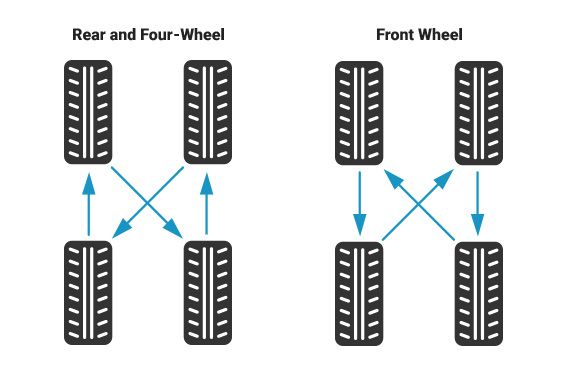 This is Federal’s ultimate off-road tire and it comes with a pocket-friendly price.
This is Federal’s ultimate off-road tire and it comes with a pocket-friendly price.
This off-road tire has an aggressive tread design to deliver unparalleled traction and grip on the most demanding and extreme off-road terrain. Equipped with large shoulder lugs to resist bruising and ward off strong impacts, the unique incremental block edge is designed to effectively disperse water, sand, mud, and sharp stones from the tread to offer constant traction even when the going gets tougher still. The Federal Couragia M/T is constructed using an advanced tread compound that is designed to resist chips, cuts, and abrasions to increase the service life of the tire.
I was handed the keys to a 2013 Toyota 4Runner equipped with a lift kit, larger 20-inch off-road wheels, and Federal Couragia M/T tires.
I was surprised at the refinement of the tires as they were a bit more silent on paved roads compared to other mud-terrain tires that I have tested so far.
The ride comfort was also stellar given the aggressive off-road nature of the tires.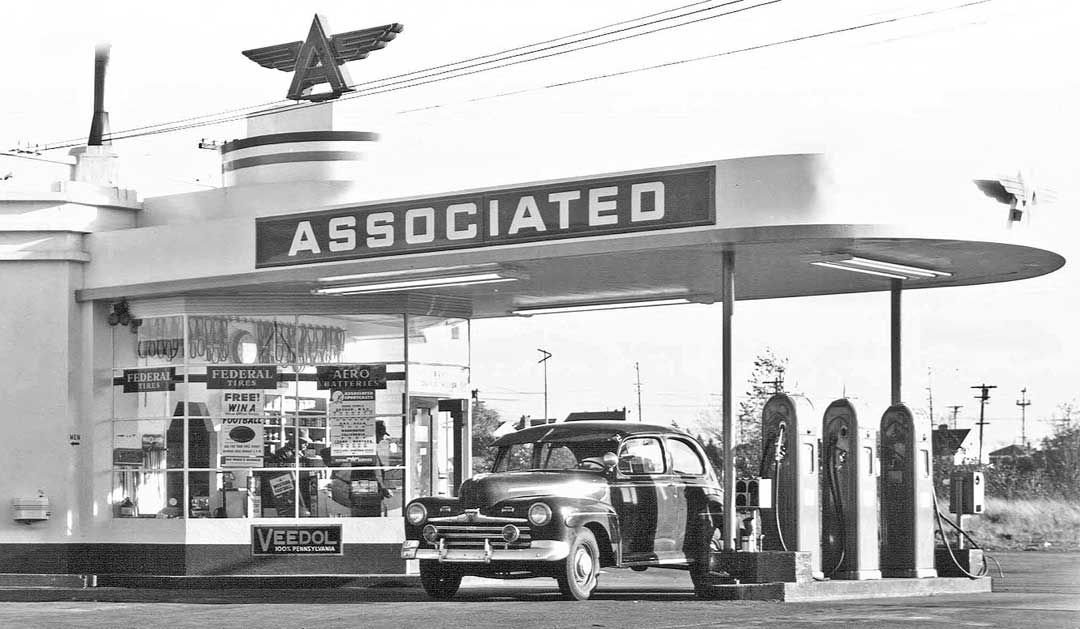 Off-road performance was commendable as the tires were relentless even when faced with deep, thick mud and loose gravel peppered with sharp stones and gravel.
Off-road performance was commendable as the tires were relentless even when faced with deep, thick mud and loose gravel peppered with sharp stones and gravel.
The Federal Couragia M/T is an awesome tire given the price.
These tires should definitely be on your shortlist if you want a dependable off-road tire that also manages to deliver a relatively silent and comfortable ride on smooth tarmac.
ConclusionYou will notice that the common complaint of car owners who participated in this Federal tires review is the rapid tread wear. Other than that, Federal tires remain a solid choice if you are looking for high-performance tires and stylish tires at an affordable price.
Alvin Reyes
Alvin Reyes has expertise in automotive evaluation. He collaborated with famous newspapers and is still making efforts in tire review for DrivingPress.com
Finding tires for a vehicle can be a bit of a hassle. We want a good value for good tires. Which leads us to ask: Are Federal tires good?
We want a good value for good tires. Which leads us to ask: Are Federal tires good?
Buying a tire that doesn’t have lots of branding and commercials behind it can be unnerving. The question is, do tires that cost a bit less stand up to the rigors of everyday driving? We plan to answer that with our Federal tires review that takes driving styles, price, and value into account.
Are Federal Tires any good? Federal Tires tend to offer an exceptional value, but their performance is about what you’d expect for a budget tire. Their all-season tires tend to perform the best, though the price between Federal and other competitive tires is a shrinking problem.
In order to know if Federal tires are in fact good, we evaluated based on a few factors: Test results are very important, but comparing Federal tires to other tires in the same, higher, and lower price range is also significant. We also took a look at how long Federal tires have been around, and the answer might surprise you. So let’s explore where Federal comes from, how they are different from other tire brands, and why we came to the conclusion about their value.
So let’s explore where Federal comes from, how they are different from other tire brands, and why we came to the conclusion about their value.
We employ a variety of reputable tire sources and real tests to make our evaluation. We understand how tire testing works, and how small differences in test results can actually make a big difference. In this particular review, we’ve looked at a few different tests and did some price comparisons. In the end, we offer a few reasons why you would want a Federal Tire and a few reasons why you would avoid them.
You might not have heard much about Federal tire, especially if you are wondering whether or not Federal tires offer good rubber for your vehicle. Federal Tire has been around for a surprisingly long time, starting in 1954 in Taiwan. With some help from Dunlop and Bridgestone early on, Federal was eligible to sell tires in the US by 1965.
More recently, Federal Tire has asked for direct feedback from rally and race drivers about their new tires - though many enthusiasts haven’t heard about the brand.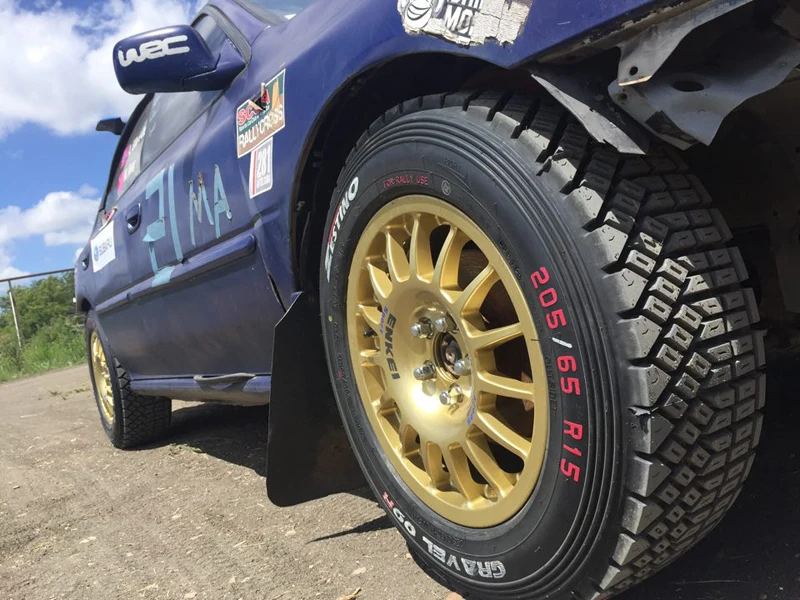 Their approach gives them a chance to adapt to real-world scenarios.
Their approach gives them a chance to adapt to real-world scenarios.
Some tire buyers dislike the idea of a tire made in a foreign country. In reality, many tires are made in either China or Taiwan. Some Bridgestone, Cooper, and Goodyear models are made in China and imported to the United States because manufacturing and shipping the tire is less expensive. There are also many Chinese tire brands that are made in China that are much cheaper - though some would say they don’t provide that good of performance.
Tires made in Taiwan, like Federal Tire, tend to be slightly more expensive than Chinese company tires, but also provide better overall performance. You’ll especially see this when we talk about snow tires.
While Federal Tire was initially known for its prowess in motorsports, they have more recently expanded to include more types of everyday driving, like SUV and sedan tires, truck tires, and all-season and winter.
We tracked down a few of the most common Federal Tires on a variety of sites and considered what users had to say about them.
For most of our individual tire reviews, we are looking at which tires sold the most and were reviewed the most from SimpleTire and comparing those to user reviews within TireRack. We also added specific tests from AutoBild. TireRack offers more in-depth reviews on some tires - down to sometimes subjective metrics on a tire’s handling capabilities, but since both sites don’t offer this information, and TireRack doesn’t carry Federal, we’ll rely upon user ratings and the prices presented.
One of the first things many reviewers commented on for the Federal Couragia tire is the look: the treads look very aggressive and look nice on trucks and SUVs. Couragia ultimately provides drivers with a pavement and mud tire.
The upside to a pavement and mud tire is generally good overall handling on dry surfaces and slightly less traction on wet roads.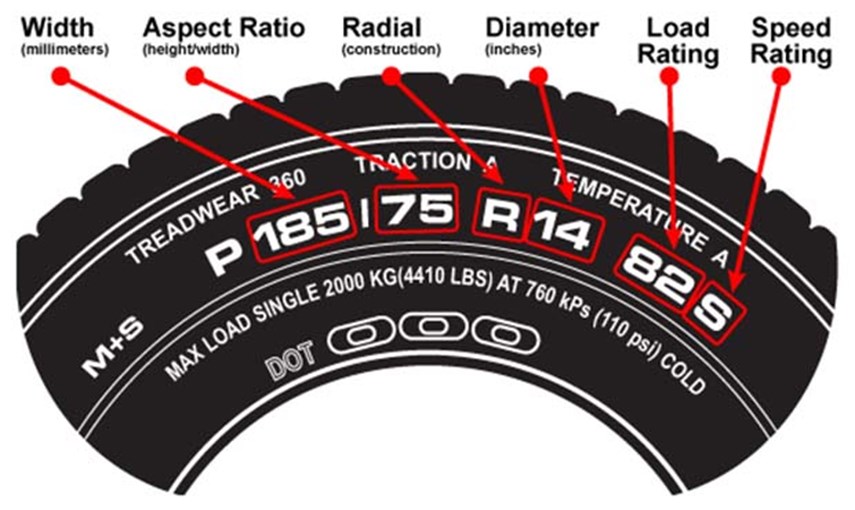 This isn’t all that surprising for the Couragia, as certain compromises need to be made, for the price, and it can’t quite do everything. Instead, the aggressive treads and strong shoulders are there more to take the impact of off-roading and better dry cornering. A block edge on the Couragia also helps push and filter dirt, sand, and gravel. Though it does filter water, that’s not a highlight.
This isn’t all that surprising for the Couragia, as certain compromises need to be made, for the price, and it can’t quite do everything. Instead, the aggressive treads and strong shoulders are there more to take the impact of off-roading and better dry cornering. A block edge on the Couragia also helps push and filter dirt, sand, and gravel. Though it does filter water, that’s not a highlight.
Overall, the Couragia provides a good example of a reasonably priced all-season and mud tire at about $100 each.
Here’s the honest part of our review: Some have complained that the Federal Couragia is too loud. While a whisper quiet mud and all-terrain tire isn’t out of the question, it’s nice to have.
Let’s make a value comparison here. One of the better-selling tires on TireRack is the Cooper Discoverer AT3 4S. For about $70 more, or nearly twice as much, the Cooper Discoverer is more highly rated and gets an 8.8 in comfort, which includes road noise. At 8.4 on TireRack, the Cooper is also about equal in snow performance, which might help people who would rather have an all-terrain tire over snow tires. The Couragia gets a respectable 4.2 out of 5 on SimpleTire, which isn’t bad for the price.
The Couragia gets a respectable 4.2 out of 5 on SimpleTire, which isn’t bad for the price.
For a bargain hunter, Couragia seems like a great value. Equipping an SUV or truck with aggressive treads for around $400 sounds good, even if they are a touch louder than competitive tires.
Just to be clear here, a high-performance tire is meant to be put on a sportier car and have good dry handling as well as comfort.
One of the most prominent thoughts repeated from reviews is claiming that the Formoza is a great value for the price paid. While Federal Formoza overall SimpleTire rating isn’t all that high at 4.3, it’s also dragged down by rating categories that barely apply to the tire, like snow ratings.
The Formoza has a nice looking, and stable feeling, symmetric tread that also provides a wide groove in the middle for increased stability under straight-line acceleration, and to provide more overall contact with the pavement.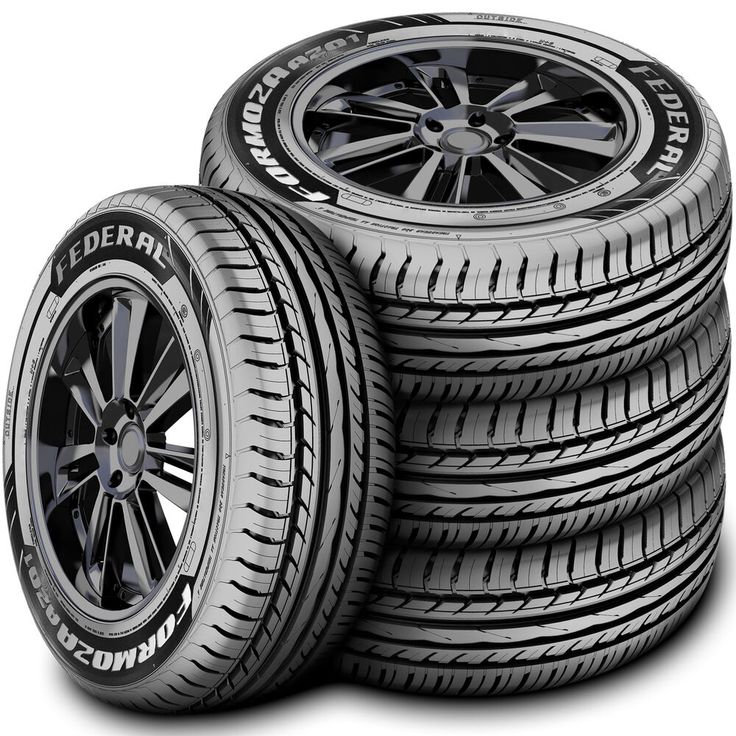 Formoza funnels water out via wide grooves on the outsides, though these are pretty standard and the 4.4 rating they get on wet pavement is pretty good.
Formoza funnels water out via wide grooves on the outsides, though these are pretty standard and the 4.4 rating they get on wet pavement is pretty good.
At $85 to $105 per tire, the Formoza seems like a pretty good deal for a reasonably comfortable high-performance sports tire designed to grip well in wet and dry conditions.
Let’s compare the Formoza to a tire found on TireRack. The Hankook Ventus V2 Concept2 lands in the upper range of the Formoza for the price to size at around $105 per tire. The difference? Hankook doesn’t get good ratings in many areas, including 8 out of 10 in dry performance - which is poor considering that dry performance is basically what the driver wants in a high-performance tire. Wet performance is a poor 6.8 of 10. The Firestone Firehawk offers better wet performance with a 7.9 and an 8.4 in dry, but at a higher premium of about $120 per tire.
Some tires have catchy names that don’t quite use a dictionary word or are a bit specific to driving, like “Destination.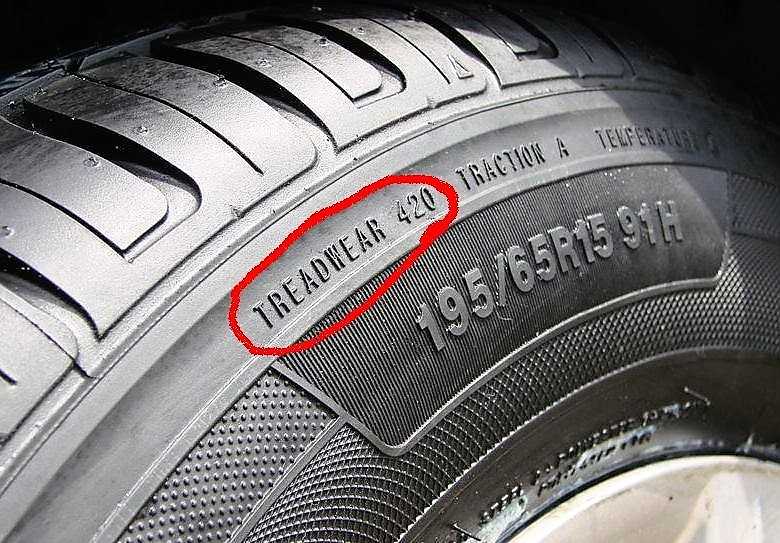 ” While we don’t quite know what SS657 means to anyone, the tire is well balanced. To be fair, an all-season tire is literally designed to provide a balance of all worlds. Good traction and low noise in dry freeways. Decent handling and grip in the rain. The ability to stop and start after a snowfall.
” While we don’t quite know what SS657 means to anyone, the tire is well balanced. To be fair, an all-season tire is literally designed to provide a balance of all worlds. Good traction and low noise in dry freeways. Decent handling and grip in the rain. The ability to stop and start after a snowfall.
With a rating as high as 4.6 on dry surfaces, the SS657 goes as low as 4.0 in winter with decent comfort and noise ratings at 4.4 and 4.5. Some drivers claim they are a little loud. This is no surprise as compromise has to some somewhere. Part of the noise might come from relatively stiff steel and nylon bands, which also contribute to a rigid structure and a better than average treadwear life. Priced at $90-$100 on SimpleTire, it’s also inoffensive to your wallet.
Since we are on the path of comparing, let’s look at the least expensive tire on TireRack in a common size as the Federal SS657 - 195/60R/15. The Yokohama AVID Ascend LX fits the bill here. At $113 for the same size, it’s not that much more than Federal. So let’s find out if Yokohama has it beat here.
So let’s find out if Yokohama has it beat here.
The Yokohama might have better dry performance than Federal here, with a 9.2 compared to an 8.9 in wet. It also gets excellent comfort ratings and treadwear life. For about $13 more per tire, the Yokohama does provide the kind of quiet many SUV and car drivers want, so we might be more up to spending a little more on a Yokohama here. While there are many tires available in the same categories and sizes as Federal, this is the first we’ve seen have a price rather close to Federal while providing better overall performance.
Extreme performance tires lend themselves to racing and dry surfaces. To be more specific, you probably shouldn’t use extreme performance tires in the rain, nor should you read into their poor rain performance ratings. The 595-RS-RR gets the rating it is designed for on SimpleTire at 4.9 of 5 for dry performance. They even have a particular look- with faux flamed shaped treads on silica infused rubber compounds and an overall stiffness made for taking high speed corners and acceleration.
The lowest ratings came from noise at 3.7 and treadwear at 3.9 - both “problems” to be expected from an outright performance tire. Reviews still raved about 595RS-RR’s cornering ability and acceleration - never feeling like the tire let go of the pavement under duress.
Now let’s talk about price. Knowing that tire prices go up with sizes, we measured from 235/40/R17 which is $200 per tire before discounts at SimpleTire
For a comparison, let’s look at the Dunlop Direzza ZIII, one of the least expensive tires available on TireRack in the Extreme Performance category. For the price of $231 per tire, the Dunlop doesn’t readily outperform the average all-season tire in the same category, at 9.3 on dry surfaces. Many drivers also complained that the treadwear is relatively low, and the tire becomes noisier (they say it was already noisy) the more miles you put in.
If you found yourself with deeper pockets and the ability to pay $280 per tire, you’d also find the Yokohama ADVAN Neova. The dry performance is rated a bit lower at 9.0.
The dry performance is rated a bit lower at 9.0.
One thing to keep in mind here is that the average 595RS-RR extreme performance tire driver is probably both driving a different level of vehicle than the all-season driver. For example, the Yokohama ratings came from Porsche Carrera and a Mazda Miata, which are effectively sports cars that have high expectations for steering control and acceleration. One issue brought up for all three tires is performance under 50 degrees. The tire is designed for dry track use and is not meant to be driven in the cold - you might want a different tire for that.
Based on the information we have provided throughout the review, we have a few reasons for and against buying Federal Tires.
While extreme performance tires don’t tend to handle well in the wet or rain, some tests have shown that Federal Tires like the Evoluzion did exceptionally bad with stopping distance and control in wet conditions.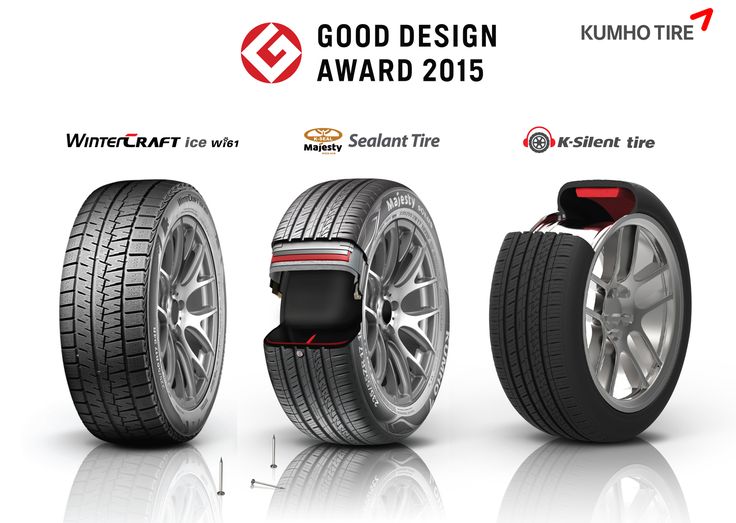
While the Evoluzion (we didn’t rate this tire above) had good overall performance compared to other extreme performance tires - and had midding performance on dry, which is good for the price, the review indicates that the Evoluzion had exceptionally long stopping distance at nearly 40 feet further than competitors and had poor enough grip in the rain to add more than 17 seconds to a lap time.
That said, if there is a chance that you’ll be driving these in the rain, we might suggest something else. Goodyear, Michelin, and Bridgestone effectively outperformed in the wet, so if you live in an area with frequent changes precipitation, those might be better options for the purpose.
We covered value in a little detail earlier. In some cases, you get what you pay for, and in other cases, the compromises might not be worth it to some people. For the tires we reviewed, non-Federal tires often offered a slight increase in performance, but for more money.
If you are on a tight budget and need decent tires for your vehicle - and you aren’t seeking extreme performance tires, Federal tires might be a great option for you. Tire buying is a story of compromise between money and performance. Tires that ride like a dream, handle tight corners regardless of your vehicle’s suspension and have exceptionally long tread life also take the biggest bite of your wallet. All-Season and mudding tires were the highlights of Federal’s performance in our review so far, as they provided comfort and handling that exceeded their own shortcomings - and were priced right compared to other available brands.
Drivers sometimes buy tires because they help get the most out of their vehicles. This mostly refers to sports can enthusiasts and people who love to accelerate onto a country road, and see how just tight they can corner - in part for fun.
If you are the kind of person who just has an average car and drives from work to home, picks up the kids, and makes occasional longer trips, Federal might be just fine for you.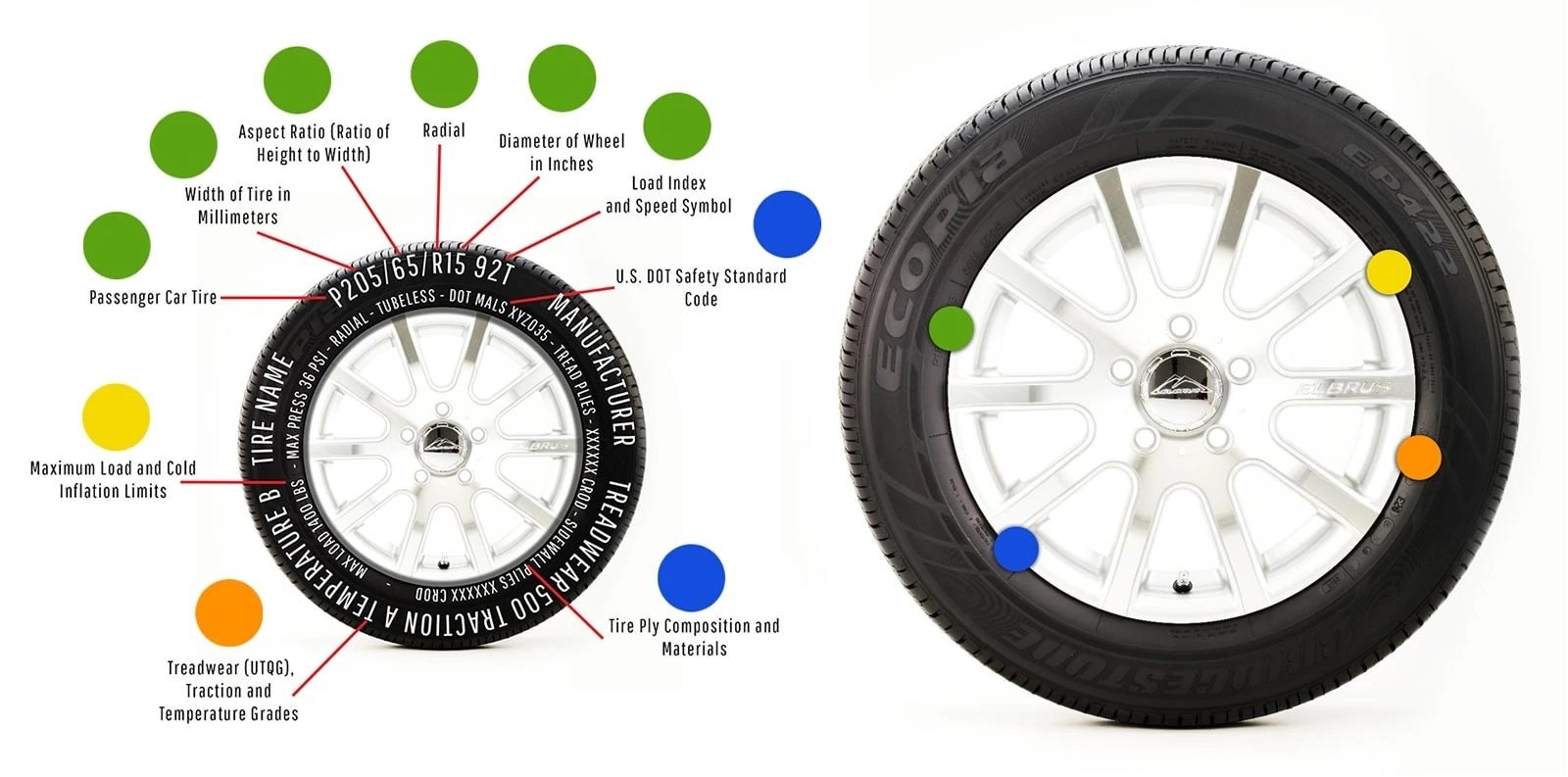 You probably won’t even notice the “road feel” when having a conversation with someone in the car. If you would rather spend the extra dollars on a more well-known “name brand” tire than invest it, save it, or just spend it on something else, Federal tires could give you that fulfillment that you made small compromises in performance while your bank account smiled.
You probably won’t even notice the “road feel” when having a conversation with someone in the car. If you would rather spend the extra dollars on a more well-known “name brand” tire than invest it, save it, or just spend it on something else, Federal tires could give you that fulfillment that you made small compromises in performance while your bank account smiled.
A good example of this is someone who is either a student or just starting out financially. While other brands offer some better performance, the prices can eye-popping with installation and make you think about used tires instead. A Federal Tire will readily beat a used tire in selection, price, and value. If you are a college student, you can switch out your Federals once they are worn, and upgrade to the tires you like.
We spoke of tread life and how Federal has middling reviews in regards to how long tires last. Another aspect of this is the warranty: Many tire manufacturers offer a warranty for their tires, with many all-season tires giving a 5 year or 60,000 miles or more warranty for workmanship defects - so long as you rotate tires and document rotation.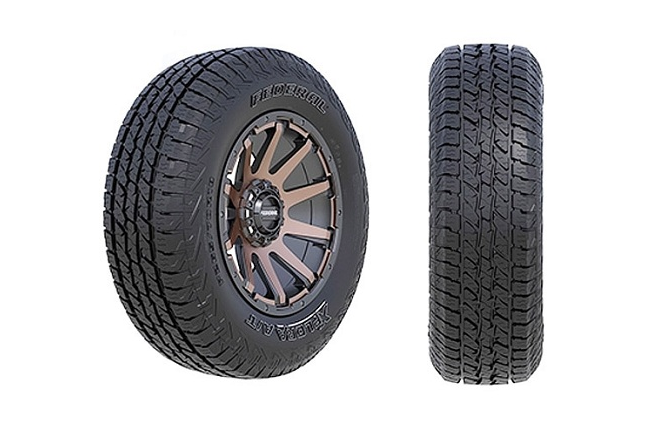 This is built into the price of the tire, which is part of the reason why non-Federal tires are less expensive.
This is built into the price of the tire, which is part of the reason why non-Federal tires are less expensive.
That said, Federal seems to reserve the right to decide when to help you if your tire is failing after the first couple of years - and it’s unclear as to when or how that is. To be fair, most extreme performance and snow tires do not have a warranty because they are driven on in ways that are not conducive to a guarantee - but all-season tires are usually driven by commuters and people who aren’t exactly driving too aggressively. We would like to see a written warranty from Federal, so for the reassurance that early treadwear is covered.
This problem could literally be between the car and the driver, but it’s also possible that the tire can impact the way the vehicle responds when turning on twisty roads. This is literally to say that the tire might not respond and feel as “grippy” as it should, or it has the potential to be less responsive, so you could oversteer or understeer taking winding suburban streets or driving through places that aren’t exactly straight.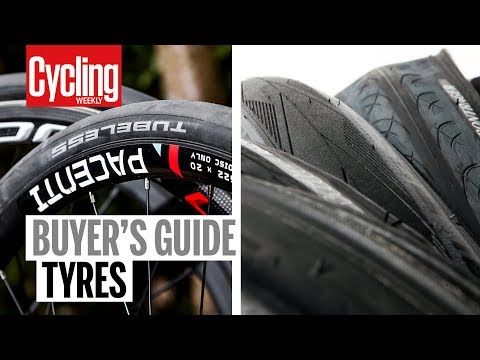
In many ways, there are the very things you pay extra money for, and why Federal offers a great value: because you compromise and get the basics.
Winter tires are meant to help grip and keep you moving and stopping in winter weather. Unfortunately, these kinds of tires also cannot really help you when it’s seriously icy outside - so just slow down anyway.
With that said, choose a non-budget and something besides Federal for snow tires. In a test of 40 tires, the Federal Himalaya did rather poorly in the snow compared to competitors. Since the purpose of a winter tire is to make it easier to control your vehicle in the snow, value doesn’t have a lot of room to be that important here. While the Federal Himalaya costs $30 less per tire than a Michelin X-Ice without a doubt. Both tires are a little loud, but at least the Michelin X-Ice does what it’s supposed to on snow - stop better than all-season and offer more control.
So if you live in the midwest or someplace with snowfall and want winter tires, try something else.
Drivers who drive long distances often need more comfort while driving. For many drivers, having a tire for a quiet ride is a very significant circumstance.
After all, not many of us like to hear our wheels hum all the way home after a hard day at work or driving down the highway during a family vacation. Drivers concerned about the noise level of their tires should purchase the quietest tires if they want a quiet and comfortable driving experience.
Readers are offered a Top 15 list that answers the question: "which tires are softer and quieter for the summer?" - here is the list:
1. Goodyear Wrangler Radial Tire
This type of tire is known for its high quality grip on and off road, yet it is very quiet when fitted to trucks and SUVs of all kinds. Compared to other tires on the market, this variant offers superior grip in both wet and dry conditions. All this thanks to an optimized tread design that increases traction in various conditions.
All this thanks to an optimized tread design that increases traction in various conditions.
In addition to traction, these tires are also known for confident handling. There are large tread blocks that provide secure handling and a stable footprint.
Pros:
| Pluses + | Cons - |
|---|---|
|
|
Hankook's Optimo H724 is an all-weather low noise "wheel". It's all about the central rib block, which improves stability and handling when changing direction. In addition, it also improves traction on various driving surfaces.
The technology used by the manufacturer significantly reduces rubber noise, making the tires spin quickly even at very high speeds./simpletire/lines/905/3.jpg) There is also a bead filler that provides stability in almost any weather. The beaded wire actually makes the rubber more responsive and improves the ride of the car.
There is also a bead filler that provides stability in almost any weather. The beaded wire actually makes the rubber more responsive and improves the ride of the car.
Pros:
| Pluses + | Cons - |
|---|---|
|
Bridgestone Dueler H/T 684 is designed for crossovers, SUVs and light trucks. The product is specifically designed to be very quiet at slow speeds while still providing exceptional traction in wet conditions. This means that you can move with peace of mind even in bad weather.
What's more, you can be sure that most of the time you will enjoy a quiet and smooth ride with these tires. Of course, this mainly depends on road conditions. This is possible thanks to the rounded profile of the casting, as well as recesses.
This is possible thanks to the rounded profile of the casting, as well as recesses.
| Pluses + | Cons - |
|---|---|
It's a solid and decent cog model that can be surprisingly quiet. However, this does not apply to significant speeds. While not quite as laid back as some of the other models on this list, the Goodyear Fortera is certainly one of the best in terms of quality and durability.
| Pluses + | Cons - |
|---|---|
While the Cooper Discoverer is primarily designed for light trucks and SUVs, it also works well for many crossovers. Excellent traction and rigid design make it ideal for dirt roads.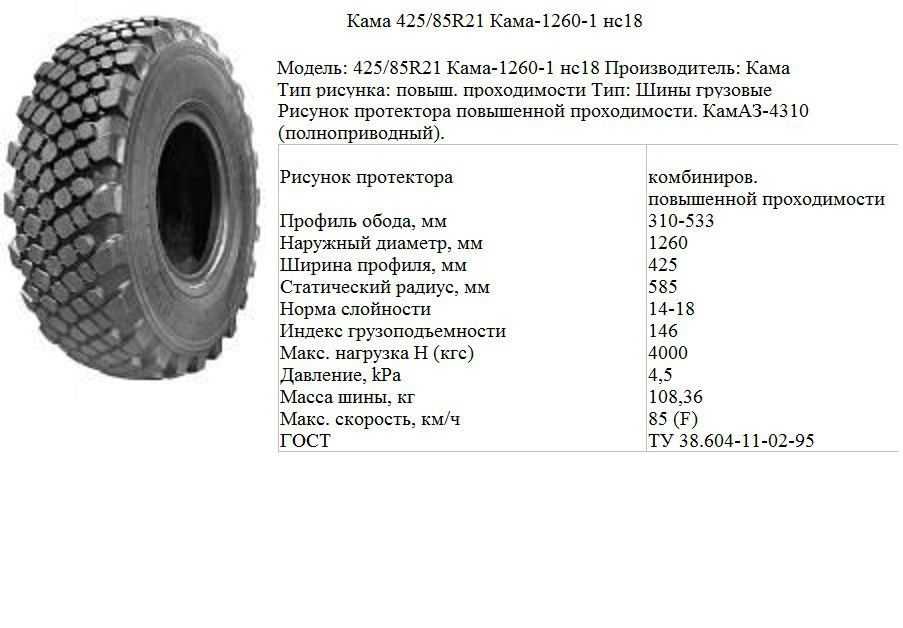
This all-season tire with a non-directional tread design provides a relaxed driving experience. It also has a rounded mold profile and a protective cover. This not only improves traction, but also prolongs tread life.
| Pluses + |
|---|
The Bridgestone Turanza is engineered with a special silicon dioxide welded NanoPro technology compound that is capable of increasing traction and handling on wet roads. The rubber is also designed for lower rolling resistance, making it more fuel efficient.
Serenity Plus builds on the original Serenity and delivers an even higher level of performance. Bridgestone uses so-called noise-reducing muffler grooves in the resonant part of the tread, which reduce noise and keep it inside the tread elements. Despite the long terminology, the results are excellent.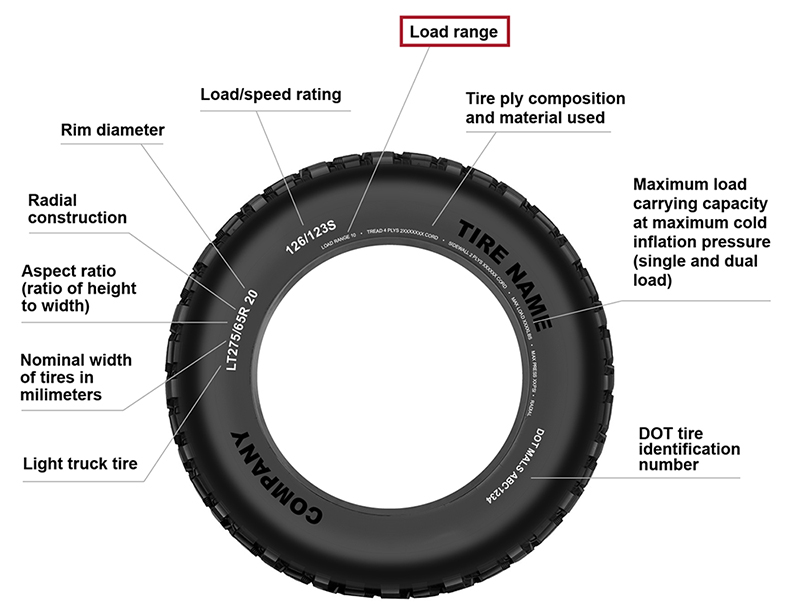 This tire is one of the quietest tires on the market today.
This tire is one of the quietest tires on the market today.
| Pluses + |
|---|
|
PureContact by Continental is the latest all-season all-season model and is one of the quietest tires available. Continental PureContact effectively provides the passenger car with the necessary traction and steering response for city streets and other roads.
Thanks to the latest technologies and materials, Pure Contact features an optimized tread pattern that not only reduces road noise, but also provides excellent traction and year-round performance. The tire also uses Eco Plus technology to increase tread life along with fuel efficiency, making it a great option for drivers.
Key features:
Eco Plus technology improves tread life and fuel efficiency
ComfortRide technology increases cushioning resulting in less impact vibrations
Double steel belts for longer life
| Pluses + | Cons - |
|---|---|
|
The Goodyear Assurance ComforTred Touring is a premium tire with an asymmetric pattern, grooves and shoulder blocks that work together to provide superior grip on dry roads.
Delivering comfort and a relaxed ride, this Goodyear Assurance ComforTred Touring model is one of the most popular and best-selling models on the market today.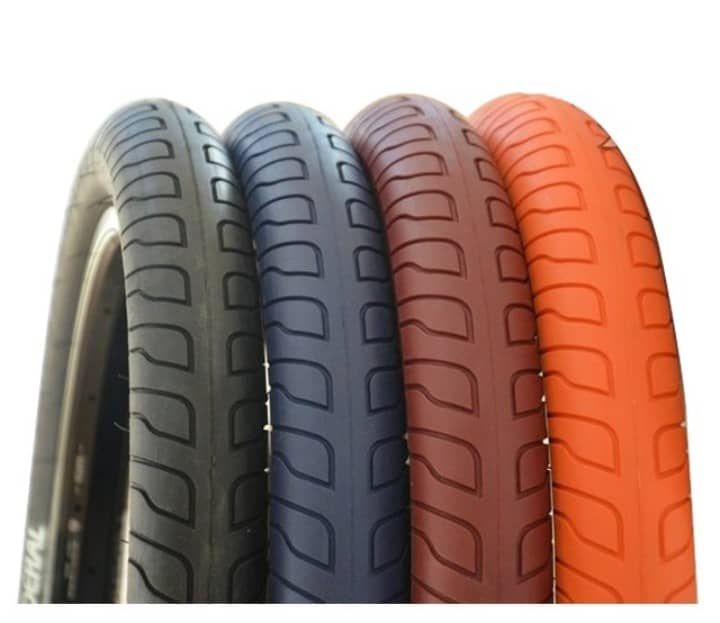 This is because Goodyear created a unique cushioning rubber layer between the tread and the steel straps. This not only softens the ride, but also insulates you from noise and vibration when driving over bumps, expansion joints and other common road obstacles. Goodyear designed this tire with a stronger sidewall to absorb more impact and handle corners (high speed) with ease.
This is because Goodyear created a unique cushioning rubber layer between the tread and the steel straps. This not only softens the ride, but also insulates you from noise and vibration when driving over bumps, expansion joints and other common road obstacles. Goodyear designed this tire with a stronger sidewall to absorb more impact and handle corners (high speed) with ease.
Key features:
Asymmetrical tread pattern for increased handling and traction
ComfortEdge sidewalls that absorb shock and improve handling,
Increase cushioning by 20% for a comfortable ride
| Pluses + | Cons - |
|---|---|
The Michelin LTX Premier is ideal for drivers and SUV owners who love quiet driving. The tires provide excellent handling and traction, as well as precise steering. The Premier LTX is one of the quietest tires available on the market.
The Premier LTX is one of the quietest tires available on the market.
The Premier LTX is the smooth, quiet ride that Michelin is known for and is arguably the best model in the entire truck and SUV lineup. Since its release in the second half of 2015, this tire has quickly become the top seller in the touring all-season category.
Key features:
Silica-based tread compound enhances traction
EverGrip technology provides enhanced stopping power
Rain grooves widen with wear
| Pluses + | Cons - |
|---|---|
|
Designed for smaller vehicles, the Bridgestone Ecopia EP20 is another model in their tire line that prides itself on delivering a quiet and comfortable ride.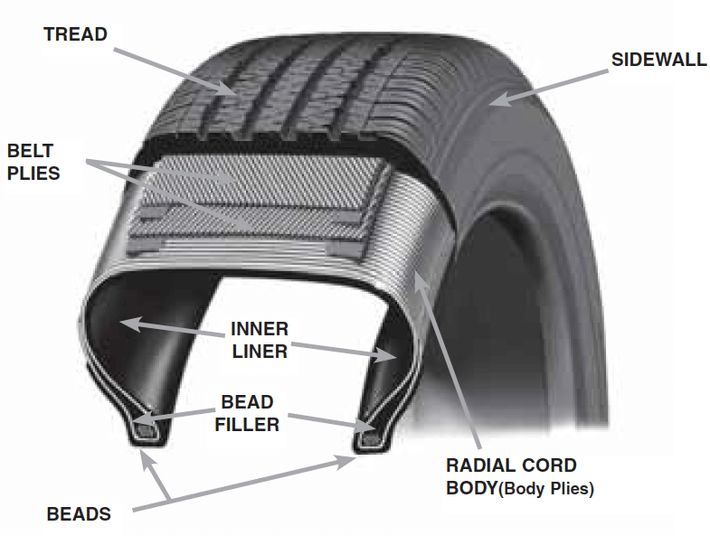 In addition to lower rolling resistance and an economical design, the tread is optimized to reduce road noise, which is a very good thing.
In addition to lower rolling resistance and an economical design, the tread is optimized to reduce road noise, which is a very good thing.
Bridgestone Ecopia EP20 with an unfussy tread pattern is an inexpensive, quiet tire. It provides exceptional traction on dry and wet roads with cornering capability at high speeds.
Key features:
Special tread compound improves fuel efficiency
Ribbed design that increases stopping power
| Pluses + |
|---|
As a new tire for 2012, the Michelin Defender stands out as an all season high performance all season tire. One very nice benefit you will also find with this tire is how quiet it is. Michelin has tuned the tread pattern to optimize comfort and quietness. You'll also love the 90,000 mile tread warranty that's included in the price.
The Michelin Defender contains a large amount of silica added to the tread to increase grip on wet roads.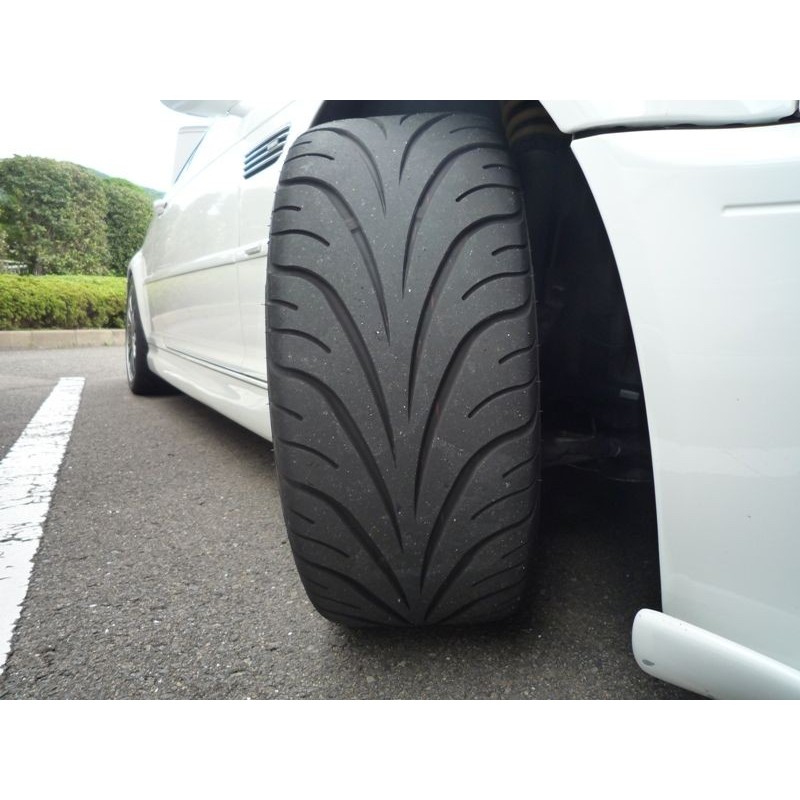 The tire is equipped with sharp edges as well as sipes to increase your car's grip.
The tire is equipped with sharp edges as well as sipes to increase your car's grip.
Key features:
Intellisipe technology increases traction
Comfort Control technology for increased stability and comfort
Evertread compound that provides wet grip throughout the life of the tire
| Pluses + | Cons - |
|---|---|
|
Hankook is on this list with their Optimo H727. With excellent all-season traction, this tire also delivers a very quiet ride quality. The tread design uses the latest tire technology with an optimized carbon composition and footprint.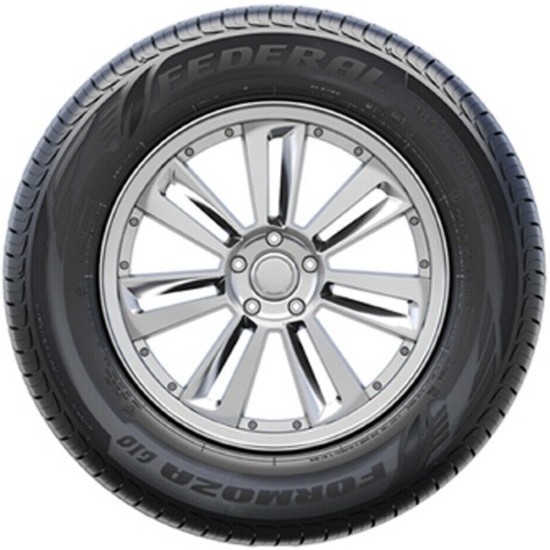 Along with tapered side sipes, the result is a tread designed to eliminate distracting road noise.
Along with tapered side sipes, the result is a tread designed to eliminate distracting road noise.
Designed for sedans, minivans and coupes, the Hankook Optimo H727 is a tire that offers excellent handling. This is an inexpensive model that offers excellent value for money, being one of the quietest tires available on the market.
Key features:
All-weather tread compound for increased grip
Asymmetric tread pattern for noise reduction
Four circumferential grooves for water displacement
| Pluses + | Cons - |
|---|---|
|
 Bridgestone Dueler H/L 422 Ecopia
Bridgestone Dueler H/L 422 Ecopia Designed to deliver exceptional year-round traction, enhanced fuel efficiency and a comfortable ride, the Bridgestone Dueler H/L 422 Ecopia is also celebrated as one of the quietest trucks and SUVs on the market today. Using the latest technology, this tire has consistently received rave reviews from other riders for its quiet ride capability.
The Bridgestone Dueler H/L 422 Ecopia offers an aggressive and highly attractive tread design ideal for SUVs and crossovers. The tire has been designed with special compounds that reduce rolling resistance while four circumferential grooves push water out to maintain wet grip.
Key features:
Ecopia rolling resistance compound
Four grooves designed to prevent hydroplaning
Sidewalls designed with Bridgestone Fuel Saver
blend| Pluses + | Cons - |
|---|---|
|
|
 Continental CrossContact LX20
Continental CrossContact LX20 Continental is known for offering quiet and comfortable rides, and the CrossContact LX20 is no exception. Using Smooth Response Technology, LX20 intermediate tread blocks and continuous center ribs to reduce road noise and improve ride comfort. It's an effective combination that makes this tire an exceptional choice.
Continental CrossContact offers excellent value for money; as a silane-gel tread compound for excellent traction and fuel efficiency. It is one of the quietest tires on the market and performs well in all weather conditions.
Key features:
Four circumferential grooves increase wet grip
Polyester shell for comfort
EcoPlus technology for improved handling and fuel economy
| Pluses + | Cons - |
|---|---|
 Firestone Destination LE 2
Firestone Destination LE 2 Firestone Destination LE 2 increases traction and handling on dry and wet roads. The tread has been designed with recesses and strong shoulder blocks that allow the car to easily negotiate tight corners with responsive steering.
While you might not expect to find a Firestone on this list, the Destination LE 2 may actually offer the quietest ride of any tire in its class. Optimized noise sequencing is behind the noise reduction you'll find in this model. The vast majority of drivers agree that this is not only a good "working" rubber on the road, but also one of the quietest models.
Key features:
Sipes and grooves improve grip
Noise sequence to reduce output noise
Shoulder blocks improve tread life and dryness
| Pluses + | Cons - |
|---|---|
Drivers may become annoyed with models that have poor damping properties that can cause vibrations and loud squeals.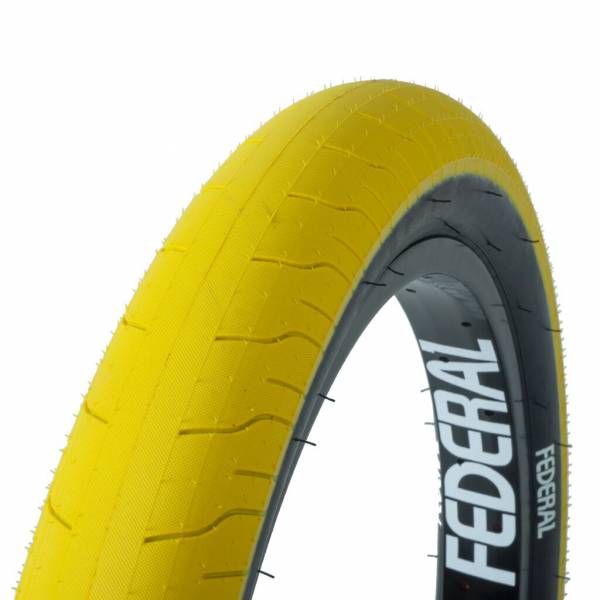 To remedy this annoyance, drivers should purchase the quietest tires available on the market.
To remedy this annoyance, drivers should purchase the quietest tires available on the market.
Manufacturers strive to provide both drivers and passengers with comfort and stability through products with special tread compounds and rigid sidewalls. These features increase durability and also minimize the vibrations experienced by vehicle occupants.
There are several aspects that you need to pay attention to when choosing the right rubber. Among them are circumferential ribs with straight grooves. They reduce noise as the air escapes freely from the tire without getting inside the grooves.
As wear increases, they become more and more noisy. The tread wears off and the variable pitch, which is used to reduce noise levels, evens out. The elements may also begin to wriggle under the weight of the vehicle. If the noise becomes unbearable, you may need to change tires.
Only when you drive a car with tires can you be sure how noisy they are. But some aspects tell you if they will be quiet. A softer rubber compound is one of those aspects. In addition, different tread block shapes can also create different road noises, which are "compensated" so you get a quieter ride.
A softer rubber compound is one of those aspects. In addition, different tread block shapes can also create different road noises, which are "compensated" so you get a quieter ride.
https://ria.ru/20180118/1512786049.html
A slippery question: what is better for winter - studded or non-studded tires?
A slippery question: what is better for winter - studded or non-studded tires? - RIA Novosti, 03.03.2020
A slippery question: what is better for winter - studded or non-studded tires?
Winter in Russia always comes unexpectedly: in some regions for a couple of months, in others for half a year or even more. This season in the central regions of the country RIA Novosti, 01/18/2018
2018-01-18T08:00
2018-01-18T08:00
2020-03-03T09:05
/html/head/meta[@name='og:title']/@content
https://cdnn21. img.ria.ru/images/sharing/article/1512786049.jpg?15127838331583215528
img.ria.ru/images/sharing/article/1512786049.jpg?15127838331583215528
russia
RIA News
1
5
4.7
96
7 495 645-6601
Rossiya Segodnya
https: //xn---c1acbl2abdlkab1og.xn--p1ai/Awards/
2018
RIA Novosti
1
9000 54.7
9000
INTERNET-GrUAN.ru 9000 49000 49000 49000 49000 49000 49000 49000 49000 645-6601
FSUE MIA Rossiya Segodnya
https://xn--c1acbl2abdlkab1og.xn--p1ai/awards/
News
ru-RU
https://ria.ru/docs/about /copyright.html
https://xn--c1acbl2abdlkab1og.xn--p1ai/
RIA Novosti
1,000 .xn-p1ai/ awards/
RIA Novosti
1
5
4.7
9000
7 495 645-6601
FSUE MIA "Russia Today"
https://xn--c1acbl2abdlkab1og.xn--p1ai/awards/
RIA Novosti
1,000 .xn--p1ai/awards/
auto, russia
auto, Russia
MOSCOW, January 18 — RIA Novosti, Sergey Belousov. Winter in Russia always comes unexpectedly: in some regions for a couple of months, in others for six months or even more. This season, in the central regions of the country, almost no snow was seen until the New Year. Each motorist has already decided for himself which tires will best ensure his safety: studded or non-studded. RIA Novosti, together with tire industry experts, found out what is preferable in certain situations and how to behave on Russian roads when driving a car with one or another type of winter tires.
Winter in Russia always comes unexpectedly: in some regions for a couple of months, in others for six months or even more. This season, in the central regions of the country, almost no snow was seen until the New Year. Each motorist has already decided for himself which tires will best ensure his safety: studded or non-studded. RIA Novosti, together with tire industry experts, found out what is preferable in certain situations and how to behave on Russian roads when driving a car with one or another type of winter tires.
A complete swindle: why pneumatic tires end up in a landfill
NaN , NaN:NaN
According to an analytical report by the Avto.ru Internet classification, Russians in 2017 preferred studded tires. In October last year, only about 15 percent of service users were interested in Velcro (as non-studded tires are commonly called), in November, demand grew by only a couple of percent.
Studded are most popular in the Saratov and Smolensk regions, as well as in the Republic of Tatarstan (from 83 to 88 percent). Velcro attracts car owners from the Stavropol, Khabarovsk, Primorsky and Krasnodar Territories, as well as the Kaliningrad Region: there the share of studded tires did not exceed 14-30 percent of the total number of requests.
Everyone knows that studded tires are indispensable in small towns: snow is rarely or poorly removed there, densely packed snow crust is often formed, as well as ice. Numerous independent tire tests show that in these conditions the use of studs is justified, the braking distance of cars "shod" in them becomes significantly shorter.
Michael Zickfeld, Continental's Technical Customer Service Specialist, also recommends studded tires in the Russian metropolitan areas of Moscow and St. Petersburg. According to the expert, in both capitals, snow often melts on roads treated with reagents, and freezes again in the morning, turning into ice.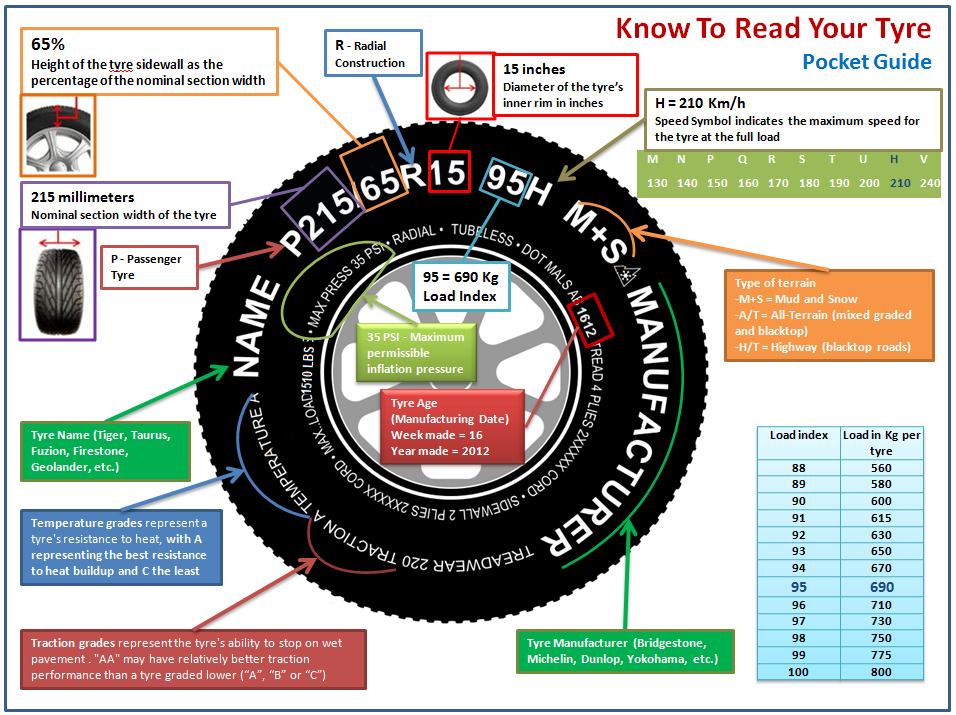 If we add snowfall to this, then it is difficult to imagine a more dangerous situation: the advantage in this situation is on the side of cars with studded tires.
If we add snowfall to this, then it is difficult to imagine a more dangerous situation: the advantage in this situation is on the side of cars with studded tires.
"In 2004, the use of studded tires was banned in Norway for one season," says Michael Zikfeld. removed."
A Pirelli technician reminds you that studded tires are designed mainly for northern countries and are prohibited in most European countries. In Russia, such tires will ensure safety in most cities.
Shattered? Ten myths about car winter operation Pirelli specialists say that this concept is philistine. The principle of operation of all tires is friction, friction with the road surface. Modern companies offer a wide selection of rubber in their product lines, but you need to be able to distinguish between them. For example, there are so-called mild European winter tires designed for moderate winter temperatures and handling predominantly snow or wet surfaces. Others, just friction ones, are designed for harsh winters. There are also tires for southern regions (mainly European). They are usually called "all seasons", and they are not adapted for Russian winters, do not provide the proper level of safety, although in the summer they can be used, for example, for off-road driving.
Others, just friction ones, are designed for harsh winters. There are also tires for southern regions (mainly European). They are usually called "all seasons", and they are not adapted for Russian winters, do not provide the proper level of safety, although in the summer they can be used, for example, for off-road driving.
© Photo: courtesy of Continental Winter road
© Photo: courtesy of Continental
season in Russian latitudes. "One of the valuable benefits of non-studded tires is acoustic comfort," Pirelli notes.
Try to steal: five simple life hacks that will keep your car from being stolen
NaN , NaN:NaN
Michael Zickfeld from Continental explains how to distinguish different types of studless tires from each other: the sidewall of a tire for harsh winters is at right angles, while for European it is rounded. Euro winter tires are designed for operation from plus seven to minus 15 degrees Celsius. Most often they are used on dry asphalt or on wet snow. "Nordic" tires are designed for much lower temperatures: up to 50-60 degrees below zero. There is also a difference in the composition of rubber: tires are harder for mild winters, and softer for severe ones. By the way, you can’t even store European tires at minus 50, let alone drive them.
Most often they are used on dry asphalt or on wet snow. "Nordic" tires are designed for much lower temperatures: up to 50-60 degrees below zero. There is also a difference in the composition of rubber: tires are harder for mild winters, and softer for severe ones. By the way, you can’t even store European tires at minus 50, let alone drive them.
How steel was smashed: deadly cars sold in Russia
NaN , NaN:NaN
The advantage of non-studded tires is best seen on dry pavement at plus and near zero temperatures, when there is no ice on the road. Tests also show that Velcro is much more stable on slush and loses traction at higher speeds than on a car with studded tires. As Michael Zikfeld explains, the lamellas of the "frictions" take the snow into themselves and make it grapple with the snow lying on the road. In addition, these grooves provide better water drainage. Even on a rolled snow surface or ice cover at negative temperatures down to minus 10 degrees Celsius, a water film is formed about a millimeter thick.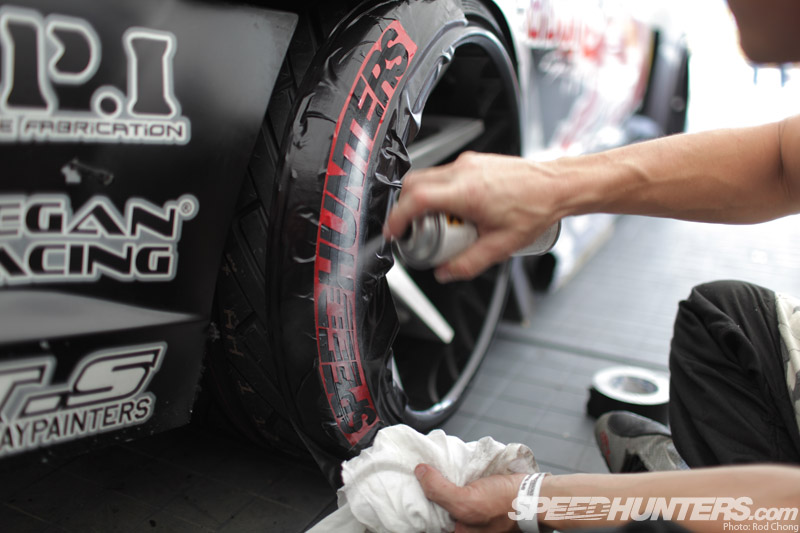 Friction tires in this case drain water and provide a good grip. The liquid film disappears only at very low temperatures (about minus 30 degrees), and then non-studded tires lose their effectiveness.
Friction tires in this case drain water and provide a good grip. The liquid film disappears only at very low temperatures (about minus 30 degrees), and then non-studded tires lose their effectiveness.
Surprisingly, the more cars with studded tires in the city, the safer the operation of cars with non-studded tires. On an icy road, the spikes loosen the surface and thus create more grip for the Velcro. That is why, according to a Continental expert, friction tires can be used even in regions with severe winters. Of course, large cities are not alike, and winter somewhere in Siberia leaves almost no chance for non-studded tires.
One thing not to consider when choosing tires is the type of vehicle drive. “All drives brake equally, and what’s more, all-wheel drive cars weigh a little more than their 2-wheel drive counterparts, so quality tires that provide good deceleration are even more important to them,” says Zikfeld.
Braking is also affected by the width of the tire tread: if it is possible to install larger diameter discs on the car, then there is no doubt that with the same tires, the larger wheels will provide a little better deceleration.
For the studs and tread of any tire to last longer, it is important to break it in. The Continental expert advises the first 500-800 kilometers to drive smoothly at a speed of no more than 100 kilometers per hour. So tires wear out less and last longer. Otherwise, the spikes will take the wrong position (bend at the wrong angle) and fly out faster. The same with the tread - without a break-in, it wears out much faster and the tire life can be reduced by two or more times.
"We monitor the use of tires in taxis - they drive there in a year as much as an ordinary driver in three or four years," says Michael Zickfeld. "So, in some cases, a tire becomes unusable after 25 thousand kilometers, and in others, with the same distance traveled, all the spikes on it are intact.
Pirelli is of the same opinion and adds that the service life also depends on the correct pressure, adjusted camber / toe-in, temperature in which the rubber is used, road surface and off-season storage conditions.
Through the snow and snowdrifts: what new cars will appear in Russia this winter
NaN , NaN:NaN
Do not sound the alarm if spikes start to fall out of the tire. "The loss of 10 percent of the spikes will not affect the behavior of the car," Continental notes. "Claws" usually fall out after 20 thousand kilometers, but if the driver drives the car aggressively, constantly starts with slippage, brakes sharply on dry pavement, this will happen much faster.
In a relaxed driving mode, the studs fall out as the tread wears out, but even after losing half the tire will still be able to provide an acceptable level of braking. Replacement will be required when the tread depth becomes less than four millimeters: the spikes will fall out like scurvy teeth.
For a friction tire, everything is much simpler: you only need to look at the tread depth. Many car manufacturers have indicators: numbers or images of snowflakes are gradually erased, suggesting when it is time to change tires.